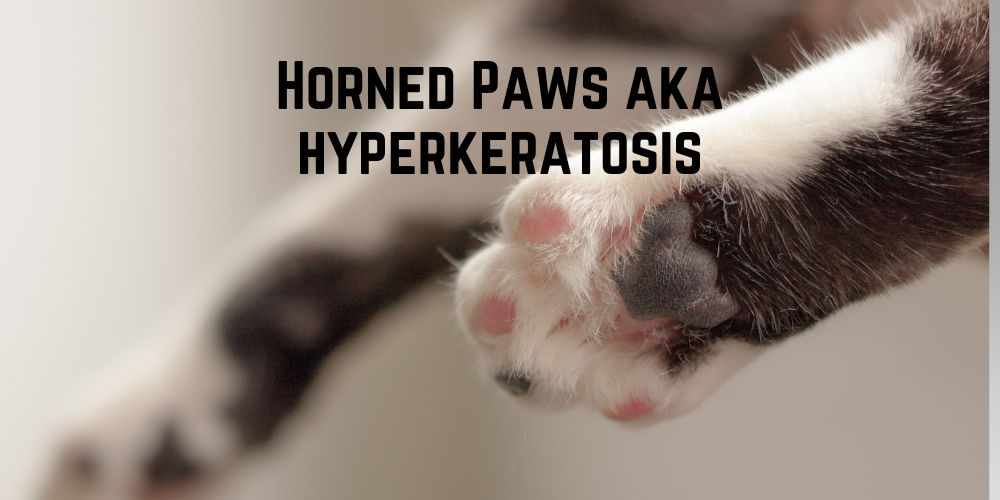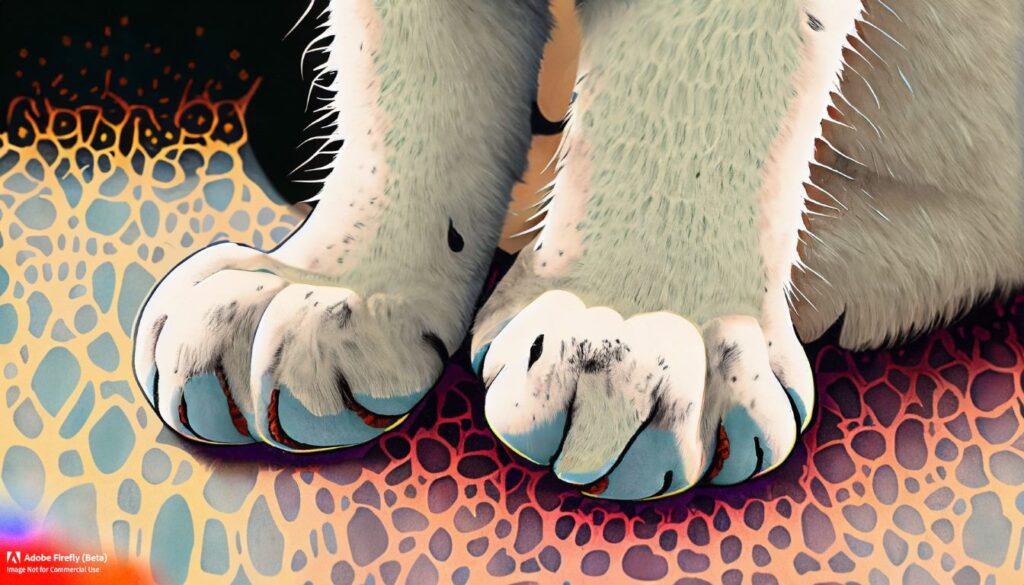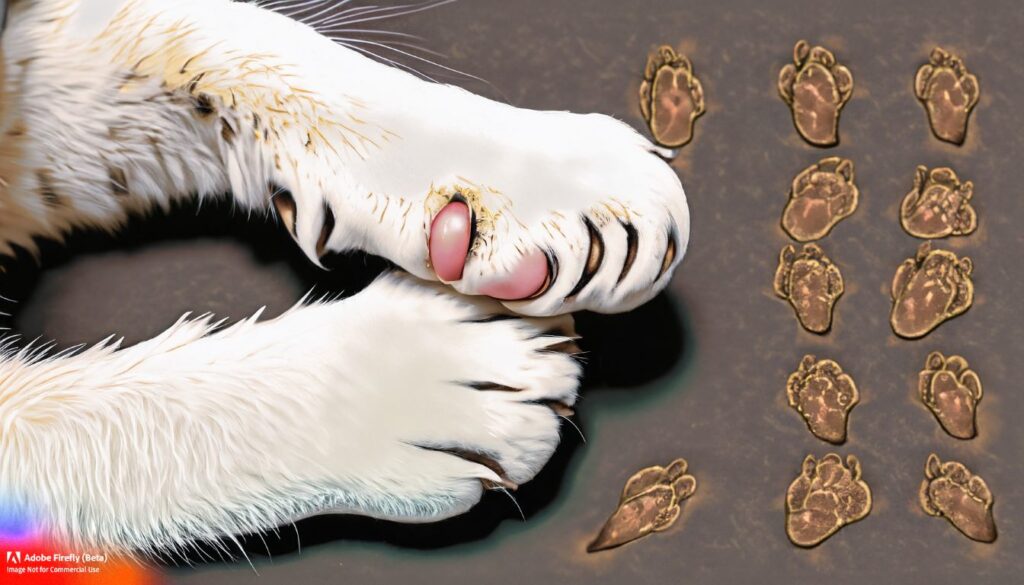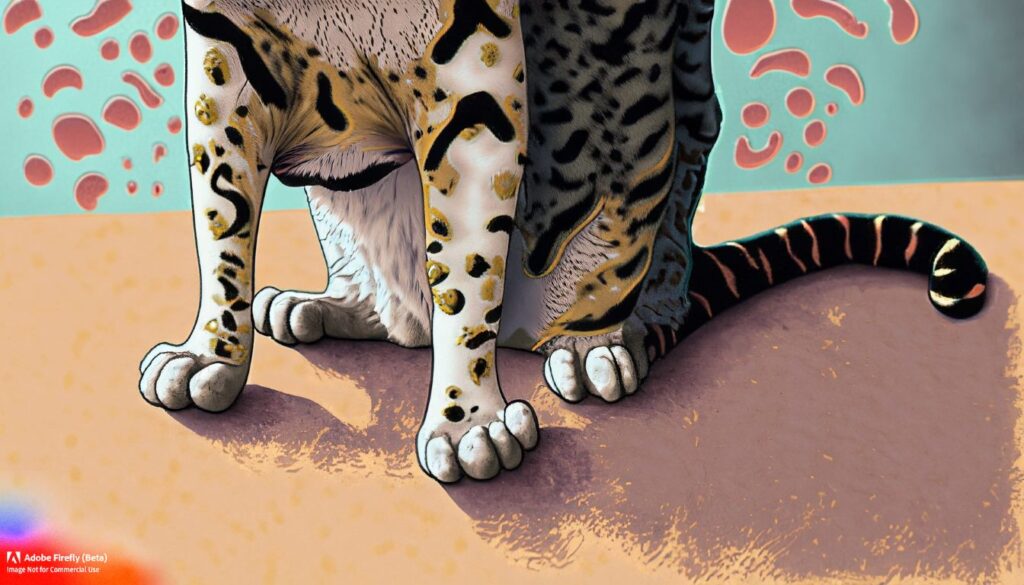
In this article, we will explore the topic of horned paws in cats and discuss whether they can cause pain or discomfort to our feline friends. We will also delve into the condition known as hyperkeratosis, which can lead to the development of horned paws. Furthermore, we will provide remedies and treatments that can help alleviate the symptoms associated with hyperkeratosis in cats. So, let’s dive in and learn more about this intriguing topic.
Cats are cherished companions known for their grace and elegance. However, some feline friends may develop a condition called hyperkeratosis, which can lead to the formation of horn-like protrusions on their paw pads. This article aims to address concerns about whether horned paws cause pain or discomfort to cats and provide effective remedies for managing hyperkeratosis.
Understanding Horned Paws in Cats
Horned paws, or hyperkeratosis, occur when the skin on a cat’s paw pads thickens and hardens. This can result in the formation of rough, scaly, or even horn-like protrusions on the surface. While this condition may appear alarming, it’s essential to understand its causes and impact on a cat’s well-being.
Causes of horned paws in cats:
The exact cause of horned paws in cats is not fully understood. However, potential factors that may contribute to their development include:
- Hyperkeratosis: This is a condition where there is an excessive thickening of the outer layer of the skin, leading to the formation of keratinized growths.
- Chronic irritation or inflammation: Prolonged irritation or inflammation of the paw pads, possibly due to allergies, infections, or repetitive trauma, may trigger the formation of horn-like growths.
- Viral infections: Certain viral infections, such as papillomavirus, have been associated with the development of cutaneous horns in cats.

Causes of Hyperkeratosis in Cats
Hyperkeratosis in cats can have various underlying causes. It may be genetic, linked to certain breeds, or a result of nutritional deficiencies. Other factors, such as allergies, autoimmune disorders, infections, or exposure to environmental irritants, can also contribute to the development of hyperkeratosis.
Signs and Symptoms of Hyperkeratosis
Identifying hyperkeratosis in cats is crucial for early intervention. Look out for signs such as dry, cracked paw pads, excessive thickening of the skin, and the formation of horn-like growths. Cats with hyperkeratosis may experience discomfort, pain, or difficulty walking. Regularly inspecting your cat’s paws can help detect these symptoms early on.
Potential Pain and Discomfort for Cats
While horned paws may appear uncomfortable, their impact on a cat’s well-being can vary. Some cats may experience pain and difficulty walking due to the hardened skin, while others may adapt and exhibit minimal signs of discomfort. Observing your cat’s behavior and consulting with a veterinarian are crucial for understanding the level of pain or discomfort involved.
Diagnosis of Hyperkeratosis
To diagnose hyperkeratosis in cats, it is important to consult with a veterinarian. The vet will perform a thorough examination of the cat’s paw pads and may also consider the cat’s medical history and any underlying conditions. In some cases, a biopsy or skin scraping may be necessary to rule out other potential causes and confirm the presence of hyperkeratosis.
Treating Hyperkeratosis in Cats
The treatment approach for hyperkeratosis in cats aims to reduce the thickening of the paw pads and alleviate any associated discomfort. Veterinarians may recommend various treatment options, including topical creams or ointments that contain keratolytic agents to soften the hardened skin. Regular and gentle exfoliation of the affected areas may also be recommended.

Treatment of horned paws in cats:
The treatment of horned paws in cats typically involves addressing the underlying cause and removing the growths. Here are some possible treatment options:
- Veterinary examination: It’s important to have your cat examined by a veterinarian to determine the cause of the horned paws and rule out any underlying health issues.
- Cutaneous horn removal: Depending on the size, location, and nature of the growths, the veterinarian may opt to remove the horns surgically. This procedure is performed under anesthesia, and the removed tissue may be sent for further analysis.
- Treating underlying conditions: If there are underlying conditions contributing to the horned paws, such as infections or allergies, the veterinarian may prescribe medications or recommend appropriate treatments to address those issues.
- Ongoing care: After the removal of the horns, it’s important to provide proper paw pad care and regular monitoring to prevent recurrence and ensure the cat’s comfort.
Home Remedies for Horned Paws
Alongside veterinary treatment, there are some home remedies that can help manage horned paws and hyperkeratosis in cats. These include providing a comfortable and clean environment, ensuring proper hydration, and incorporating supplements rich in omega-3 fatty acids to promote healthy skin and paw pad maintenance. However, it is important to consult with a vet before trying any home remedies.
Regular Maintenance and Care
Cats with hyperkeratosis require regular maintenance and care to prevent the condition from worsening. This includes trimming the cat’s nails, keeping the paw pads clean and moisturized, and monitoring for any signs of infection or deterioration. By implementing a consistent maintenance routine, you can provide your cat with the best possible care.
Preventive Measures for Hyperkeratosis
While not all cases of hyperkeratosis can be prevented, certain measures can help reduce the likelihood of its occurrence. Providing a balanced and nutritious diet, minimizing exposure to irritants or allergens, and maintaining good overall hygiene are essential preventive steps. Regular veterinary check-ups can also help identify and address potential issues early on.
Importance of Veterinary Consultation
Seeking professional veterinary advice is crucial when dealing with hyperkeratosis in cats. A veterinarian can accurately diagnose the condition, recommend appropriate treatments, and provide guidance tailored to your cat’s specific needs. They can also monitor your cat’s progress and make necessary adjustments to the treatment plan.

Living with a Cat with Hyperkeratosis
Living with a cat that has hyperkeratosis requires understanding and patience. It is important to provide a safe and comfortable environment for your cat, along with regular veterinary care and ongoing treatment. By being attentive to your cat’s needs and providing support, you can help them lead a happy and comfortable life.
Emotional Support for Cats with Hyperkeratosis
Cats with hyperkeratosis may experience emotional distress due to pain, discomfort, or changes in their mobility. Offering emotional support through gentle interactions, providing cozy resting spaces, and engaging in activities that stimulate their minds can help alleviate any emotional challenges they may face.
Tips for Managing Cat’s Pain and Discomfort
If your cat experiences pain or discomfort due to hyperkeratosis, there are several strategies you can employ to help manage their symptoms. These include providing soft bedding, using pain relief medications prescribed by a veterinarian, and incorporating environmental modifications to minimize physical strain on your cat.
Conclusion
Hyperkeratosis and the development of horned paws can pose challenges for cats. However, with proper understanding, veterinary care, and ongoing management, it is possible to provide relief and improve their quality of life. By staying vigilant, implementing preventive measures, and seeking professional advice, you can ensure your cat’s well-being and help them thrive.
FAQs
FAQ 1: Can hyperkeratosis in cats be cured? Hyperkeratosis cannot be completely cured, but with appropriate treatment and care, the symptoms can be managed effectively, providing relief to the cat.
FAQ 2: Are certain cat breeds more prone to hyperkeratosis? Yes, certain cat breeds, such as the Himalayan, Persian, and Maine Coon, are more prone to developing hyperkeratosis.
FAQ 3: How long does it take to see improvement with treatment? The time it takes to see improvement varies depending on the severity of the condition and the individual cat. It may take several weeks to months to notice significant improvement.
FAQ 4: Can hyperkeratosis lead to other health problems in cats? While hyperkeratosis itself does not directly cause other health problems, it can increase the risk of secondary infections or complications if left untreated.
FAQ 5: Is hyperkeratosis contagious to other cats? No, hyperkeratosis is not contagious to other cats or humans. It is a non-infectious condition caused by various factors and is not transmitted between individuals.

Hi, This is Alexa, and I love cats. This Website is a Complete Journal about how to travel with a cat and other information about Cat Health, Cat Training, Cat Behavior, Cat Foods and more. I hope you find it useful.
